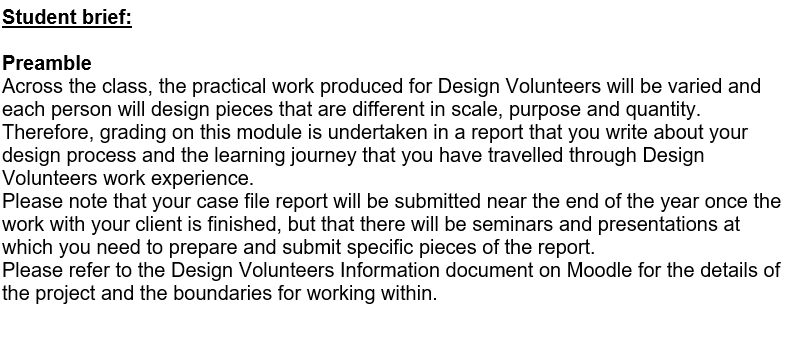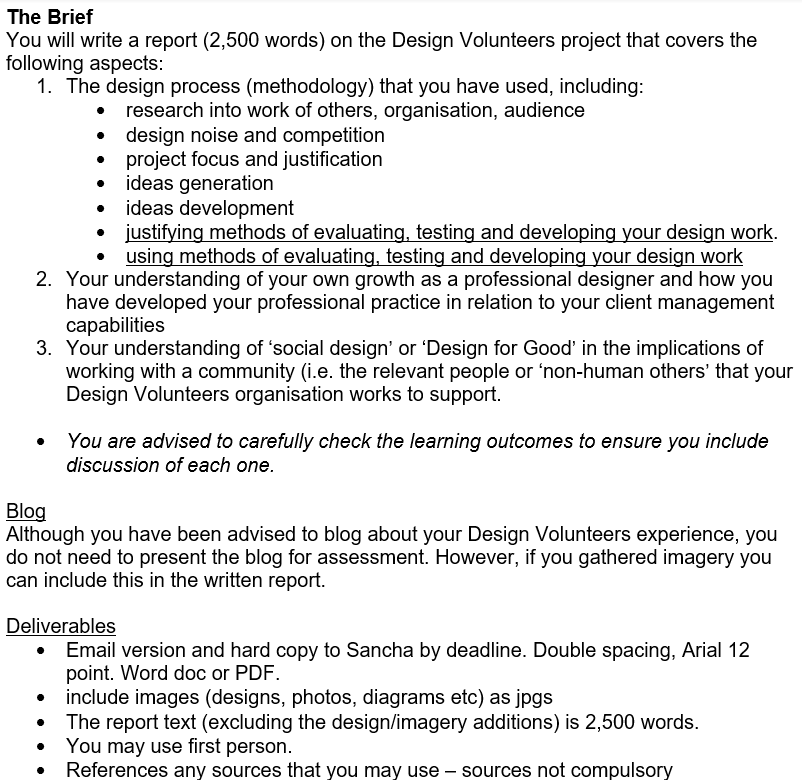
I need to reflect on the research I did into the charity and go further in depth to explain what I identified about the other designs of my client and of comparable companies that influenced my design process and outcomes. The conclusions I made based on this information as well as about the client in general will also need to be a part. I will also evidence how I responded to what the client specifically listed as their needs and requirements. I should also reflect on the process in terms of systems thinking, identifying where negative impact ends up through the chain of consequences of what resources the designs use. I will then need to evaluate the work I produced through methodologies; breaking down the design using semiotics, bringing in the phenomenology to assess what the design makes one feels, and how these interpretations show that the designs were appropriate. I should also be setting this in the context of contemporary design, such as how inclusion is a factor, and other implications on the world.


Main points to include and expand upon, which I found answering the Design Volunteers survey questions previously:
- The feeling of responsibility to producing work which has real-world impacts: this comes into the section on my professional growth.
- Discussing the work that the client does, how this implicates my design in having a positive message that needed to be handled responsibly.
- How I managed the client relationship, the experience of this over the course of the project.
- How I learned to take initiative and use the important base knowledge of design principles.
Points it seems I will need to bring up in response to each requirement:
- I found Scotts’ identity in their other work, how they present themselves through their public facing branding.
- Scotts talk a lot about the young adults they are helping so I paid attention to these cases as the audience.
- I will identify similar charity work and see where Scotts’ design separates itself and what message in Scotts I was able to bring out to stand against competing design.
- I will go back through where my client set out the needs and requirements – for the leaflets and booklet – and how I took to planning with this information and why it prompted my follow-up communications.
- How my work was justified by what Scotts put forward as their message and what the content of the leaflets and booklet was.
- Look back over and summarise my different layout ideas, how I arrived at the design which allowed for a lot of content to fit without interruption.
- How I responded to feedback the client gave me in development.
- Analysing the design in how the layout directs the attention, how the colour coding and reliable appearance comes across, the importance of using imagery, how the work was tested for readability and kept to character size and layout limitations.
- Explicitly I will have to say there was a formal analysis and why formal analysis is useful.
- How the live brief meant communication with the client was key.
- I gained experience with sending files, considering how they will print, explaining the process and how it was intended to look during development.
- The significant and positive implications of Scotts’ charity work and my responsibility to reach the community in a way that is understandable and positive. also work in systems thinking here, the reach is negative too.